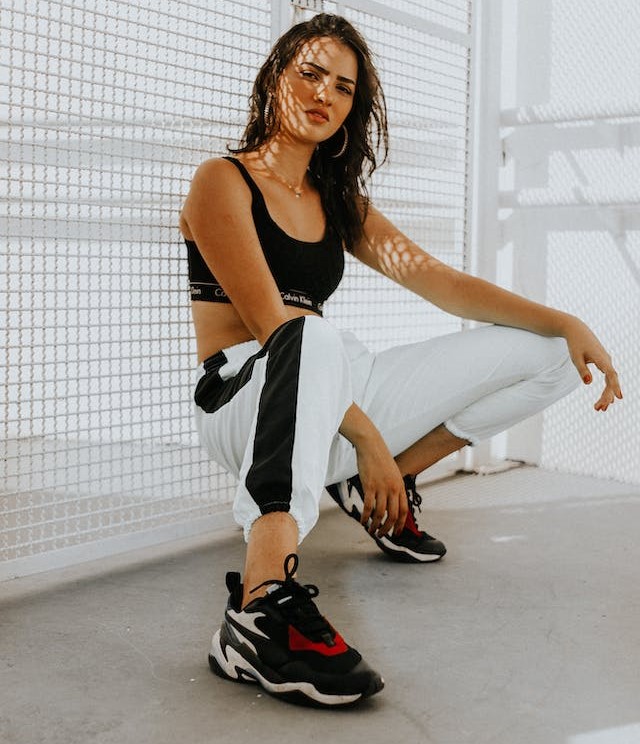How to Make It as a Freelance Stylist
GUIDE
Stylists are often the masterminds behind those breathtaking editorial spreads and celebrity looks. However, the world of fashion is a competitive field, and it takes more than just good taste to make it.

If you are a budding stylist, how do you grab the attention of luxury or edgy brands? Even secure a dream gig? This guide breaks down some practical tips gathered from the success stories of those who have made it as freelance stylists.
There is no single path to success and you may stumble or pivot a few times before you start to get serious recognition from followers or hiring companies. But that’s all part of the journey.
The joy of dressing is an art.
John Galliano
Step 1: Hone Your Skills & Build Your Portfolio
Before you jump into the freelance world, it’s important to make sure you have the necessary skills and experience. Keep your day job, which is pretty much what most people should do when venturing into a new career or going self-employed.
If you’re new to the industry, consider taking a fashion styling course, volunteering at a fashion magazine or applying to work at a boutique or known brand. The fashion magazine will be a tough ask, but if you have a portfolio that looks professional, have done your research on the magazine’s stylists, and understand the editor’s take on fashion, you can always go for it. Even getting a job as a retail stylist will give you a stronger foundation in the basics of fashion, from trend forecasting, to garment construction and customer demands.
You don’t need to have tons of skills to start a portfolio. Start with yourself as your first model and with your existing wardrobe. This will test you to create a capsule wardrobe that you can mix and match and build on. The great thing about a portfolio is it can change and be updated.
Then move on to personal shopping trips. Either on your own or even better bring a friend or two along and video or take fashion shots of the outfits you have put together. Explain what works and why.
You may then start to get some traction on social media or your blog from followers. Start local and offer your styling services for a reasonable fee. You can conduct an initial consultation in a shop or on a phone or video consultation to get a better idea of a client’s lifestyle, career and life goals. This is a great way to progress and add to your knowledge.

Tip: Your portfolio is your calling card, so make sure it’s polished and professional. Try out the latest apps that help you make incredible portfolios and build your digital skills for jobs with luxury brands (see our must-have digital skills and tools section below)
Tip: A stylist’s job is not frivolous. It can be life-changing for a client. Clothes and personalised style can transform a person’s confidence in all aspects of their life.
Tip: Make sure your video surroundings or background for client meetings is a good reflection of your style and even branding if you have developed a logo. Uni students can make their room or video background amazing with great style, creativity and thought.
Tip: If you are going to take photos with a mobile phone then pick up photography tips to make the most of your shots. And invest in a good tripod for still images and videos. Insure your mobile and tripod.
Step 2: Network and Build Relationships
The fashion industry is all about relationships. Get to know other stylists, photographers, editors, and anyone else who works in the field. Attend industry events, network online, and don’t be afraid to cold-email people you admire. Ask them for their tips and how they made their first big break. Could you shadow them for a day? The more people you know, the more opportunities you’ll have to come your way. If you have your portfolio online then this is an opportune time to show what you can do.
Step 3: Define Your Niche and Target Market
The fashion industry is vast, so it’s important to find your niche. Do you specialise in university styling? The young executive? Sportswear? Urbanwear? Country living style? Over 50s? Editorial styling? Personal shopping? Magazines or luxury corporate photo shoots? Once you know your niche, you can target your marketing efforts to the right people or hiring companies. Keep an open mind, too, your mission is to use good style sense and to help clients feel their best, so you have to work with them and sometimes help them take risks.
Fashion is the armor to survive the reality of everyday life.
Bill Cunningham, Fashion Photographer
Step 4: Set Your Rates and Establish Your Business
Once you have helped out a few friends for free or a small fee (i.e. they spot you for lunch and do some PR for you!) you may get a better idea of customer expectations and what a service actually entails so you can price accordingly so you are not out of pocket on expenses (i.e. travel, app subscriptions, etc.).
Being a freelance stylist means being your own boss. This includes setting your own rates, invoicing clients, and handling your taxes. There are a few things to consider when setting your rates, such as your experience, location, and the type of projects you work on. It’s also important to get familiar with the business side of things, such as how to write contracts and create invoices.
Never do business without a contract. Template contracts can be found online or through your freelance insurer. If you do look online, look specifically for stylist contracts and in the country you work in. The contract should outline your fees, working conditions, what your service will entail, an advance deposit, which can be non-refundable or go towards the rest of the service once paid in full.
Step 5: Market Yourself and Get Clients
Once you’re ready to start taking on clients, it’s time to market yourself. Create a website or social media profile that showcases your work and your unique style. You can also reach out to potential clients directly, or work with agencies that connect stylists with brands and individuals.
Freelance stylists’ earnings can vary widely depending on experience, reputation, and project type. Rates can range from a couple hundred pounds per day for assisting to several thousand for high-profile editorial shoots. Salaries can be up to £30,000 for London-based stylists working with brands in-store. Starting in retail can often be a place to get your first styling work experiences.
Then once you have some experience building a diverse portfolio and establishing a strong brand in a specific niche can help you command higher rates. Due to the freelance nature of styling, work ethic can play a very crucial role in earnings. The more clients you have, the more opportunities for compensation.
Instagram has proven to be one of the best ways to attract the attention of brands all over the world. Although there is no clear-cut template on how to win over your followers and brands, the one consistent factor that influencers-turned-designers use is their sense of identity. They often use their originality and do not compromise based on current trends. In short, be yourself and let others find and relate to your work rather than automatically creating looks based on what others have done before or what you assume others want.
I don’t design clothes, I design dreams.
Ralph Lauren
There are also apps that style customer outfits. They are a good place to look for digital outfit mock-ups, but also to understand the business of personal styling apps and the link up to retail. Once you have a portfolio and experience you may be hired by some of these sites if that is an avenue you would like to pursue. Here are some to look at for inspiration:
Must-have digital skills and tools:
The great thing is you don’t have to write code to create an amazing portfolio website. Some have templates you can use right away.
Tip: Never have your entire portfolio on just one social media platform either. What if they shut down your account in error or your account gets hacked? You want all your work backed up on a hard drive so you can share it on several platforms. Some of your work may have to stay private for certain clients so not all your work is for public display.
Here are a few portfolio builder sites for still images and video to consider:
Other skills and apps you should learn:
LookBook apps: Every stylist should be able to create a digital LookBook. Here is an app that can help you start on your own wardrobe. Check out this demo by Stylebook Closet. There is also apps that could help clients try on different outfit options without leaving their homes, like Outfits AI.
Video-making apps: Some apps are geared for stylists and e-commerce, such as Vmake. AI video creators must be used with caution. You want a video maker that can integrate your text, images or video, but you want to avoid a robotic feel or AI-generated models that come off looking odd. You’ll know when you see them. Some tech is getting better in cases where you want to focus on the clothes rather than the model.
Photo editing software: Master programmes like Adobe Photoshop and Lightroom to create stunning portfolio images.
Social media management: Build and engage your audience on platforms like Instagram, TikTok and Pinterest via the latest AI social media content schedulers, script and video builders.
- Project management tools: Stay organized and efficient with apps like Trello or Asana.
- Trend forecasting tools: Use resources like WGSN or Fashion Snoops to stay ahead of the curve and share your own take on trends in your social media posts. If you ever would like to create a line of clothing this is a good source.
Step 6: Be Patient and Persistent
It takes time to build a successful freelance career. Don’t get discouraged if you don’t land your dream job right away. Keep honing your skills, networking, and marketing yourself, and eventually, you’ll find your footing in the world of fashion.
Here are some additional tips for success:
- Be professional and reliable. Always meet deadlines and communicate effectively with clients.
- Be creative and have a unique eye for style. What sets you apart from other stylists?
- Be willing to hustle. Freelancing can be tough, so be prepared to put in the hard work.
- Be passionate about fashion. If you’re not passionate about the industry, it will be difficult to succeed. It will show with clients, too.
Can university students stand out? They have. And made it.
Several stylists started their careers during university. Manchester-based stylist, Eve Kelly (@steezyy_steve_) first gained notoriety for posting her daily outfits on Instagram. Due to her ability to string multilayered and complex outfits together with somewhat ease, while also intertwining different style cultures into her outfits and posts, Eve quickly “blew up” on social media.
Praised for her ability to represent different groups in society through brands such as Stone Island and CP Company, while adding her fashionista flair to classic U.K. staples previously associated with “football hooliganism.” She has now styled for brands such as Belstaff, 7layer and Hikerdelic. Eve is a considered tribute to how far you can go from just using the resources available to you, so remember, passion, hustle, and a killer portfolio can sometimes speak louder than your academic degree.
Other stylists
Michael Fisher via The Wall Group
A S H L E Y N O R T H (@ashleynorthstyle) • Instagram photos and videos
Harry Lambert (@harry_lambert) • Instagram photos and videos



